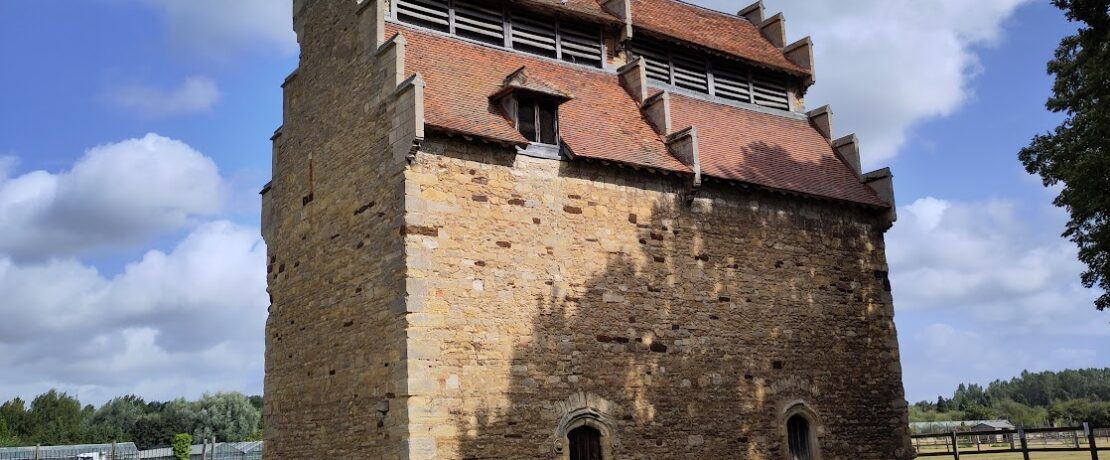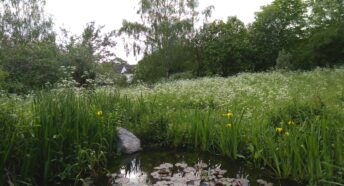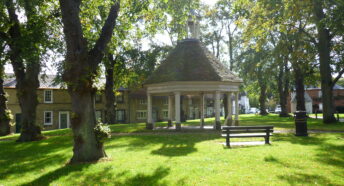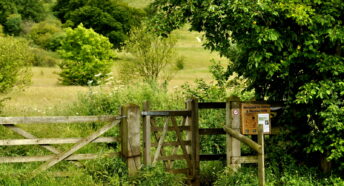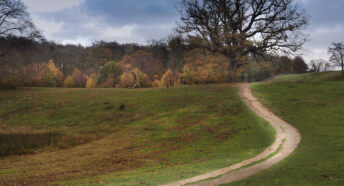D is for… dovecote
Our new series of posts helping you to explore our county is an A-Z of Bedfordshire places, landscapes and history. Each post will include tips for walks and places to visit.
In this feature we put the spotlight on one of Bedfordshire’s most recognisable historic buildings, the dovecote at Willington, as well as taking a look at some other homes for birds around the county.
Dovecotes
Dovecotes were very popular from the medieval period right through until the nineteenth century. They housed a domesticated form of cliff dove or pigeon. The birds were a useful source of protein in the diet during the winter months. In the eighteenth and nineteenth centuries the guano produced was a valuable source of fertiliser. Early references to dovecotes in Bedfordshire include Cainhoe in 1272, where one was part of an estate which included a large house and garden; Stevington where the dovecote was left in ruins following the outbreak of plague in 1349; and a dovecote and rabbit warren being added to the grounds of Bedford Friary in 1460.
The dovecote in Willington was built by John Gostwick in the early 1540s and tells a fascinating story.
Gostwick came from a family of tenant farmers in Willington but rose to be Comptroller of Thomas Wolsey’s household. It was a senior position, giving him oversight of expenditure. He purchased the manor of Willington in 1529. Gostwick survived the fall of Cardinal Wolsey and Thomas Cromwell, in 1535 Henry VIII made him responsible for collecting revenue from religious houses in Bedfordshire, Buckinghamshire and Huntingdonshire; and later for collecting and accounting for all the money owed to the king because of the dissolution of the monasteries. He was knighted in 1540, and the following year Henry VIII visited Willington, holding a meeting of his Council in the manor.
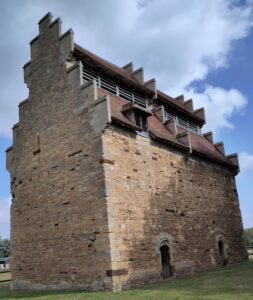
In the Tudor period, a dovecote of the size that Gostwick erected in the early 1540s was a clear display of wealth and success. Pigeon was a luxury, only the wealthy could afford to rear birds in dovecotes, serving them at banquets or giving them away as gifts. The building would have been lime-washed outside and cool and dark inside. The birds were protected from predators and had plenty of room to perch in the steeped gables. There were 1,500 nesting boxes so the dovecote could have held up to 3,000 birds at a time, with baby pigeons hatching every few weeks. At the end of the season the best birds would be kept for breeding in the next year and older birds given to the servants to feed their families. However, for local tenant farmers the birds were a serious threat to their crops, they fed on the grain left lying on the ground after harvest but also on seed grain and vegetable leaves.
Aviaries
By the nineteenth century a very different way of displaying wealth had arrived and the gardens of country houses were increasingly likely to have aviaries to house rare and exotic birds. In the 1830s Prince Puckler-Muskau visited Woburn Abbey as part of a trip to gather material for his book ‘Hints on landscape Gardening’ which was published in Germany in 1834. He was very taken with the gardens and park and described the aviary in some detail. ‘This consists of a large place fenced in, and a cottage, with a small pond at the centre, all dedicated to the feathered race.’ The description mentions black swans, parrots and pheasants as well as an African Crane called Hero, ‘a creature that looks as if it were made of porcelain.’ The aviary was originally built in 1805 and was designed by Humphrey Repton. Other birds recorded at Woburn include canaries, peacocks, macaws, doves, bantams, and waterfowl. The original buildings were burnt down but a restoration project begun in 2011 used the original designs to recreate the octagonal aviary.
The remains of an aviary can also be seen in The Swiss Garden on the Shuttleworth Estate in Old Warden. Emily Shore visited in 1891, recording her impressions in her journal. She mentions the ‘enclosures for birds’ but was, on the whole, unimpressed with the garden which was ‘…in very bad taste, and much too artificial.’ The garden was originally created by Lord Ongley as a vision of a romantic Swiss Garden, it was then restored and refreshed by Joseph Shuttleworth in the 1870s. A modern restoration project began in 2012, and visitors can now enjoy the historic garden, which gives a flavour of late Regency and Victorian tastes.
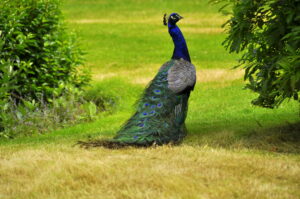
Conservation
In the twentieth and twenty-first centuries attention turned to conservation of more familiar species. The RSPB moved its UK headquarters to The Lodge in Sandy in 1961. The surrounding reserve includes a range of habitats such as heathland, woodland, a quarry and formal gardens. A wide range of birds make their home on the reserve including buzzards, kestrels, hobbies, ravens, green woodpeckers, spotted flycatchers, siskins and redpolls.
At the other end of the Greensand Ridge, Rushmere Country Park is home to a heronry, a secure breeding site for grey herons. Around ten pairs nest here and can be viewed up close with binoculars or from the visitor centre via remote cameras. These distinctive birds feed on fish, but will also take small birds such as ducklings, small mammals like voles, and amphibians. They usually nest in colonies, high up in trees. The nests are large, and herons lay three or four eggs at once. The young take around six weeks to fledge and leave the nest.
The Wetlands Nature Reserve at the Marston Vale Millennium Country Park has a specially constructed bank for sand martins. This allows these small migratory birds to nest despite the lack of natural sandbanks. They would normally burrow into cliff faces, laying eggs at the end of a tunnel. They are sociable birds, and the banks enable them to nest in groups. From a bird hide visitors can watch them swooping across the wetlands to feed on invertebrates before heading into their nest holes. Sand martins are often confused with swallows or swifts. They are the smallest bird of the swallow family that we see in the UK and are brown above and white below, with a brown band across the breast and a short, forked tail.
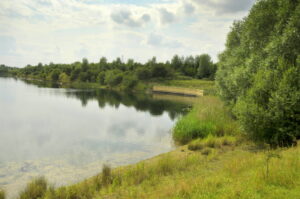
Places to visit
- Willington Dovecote is managed by the National Trust. The exterior can be viewed all year round but access to the interior is limited to one afternoon a month from April to September.
- The gardens at Woburn Abbey are closed to the public until 2026.
- The Swiss Garden at Shuttleworth is open throughout the year.
- The Lodge Nature Reserve is managed by the RSPB.
- Rushmere Country Park is managed by the Greensand Trust.
- The Forest of Marston Vale sand martin wall is on the Wetlands Nature Reserve in the Millennium Country Park.
